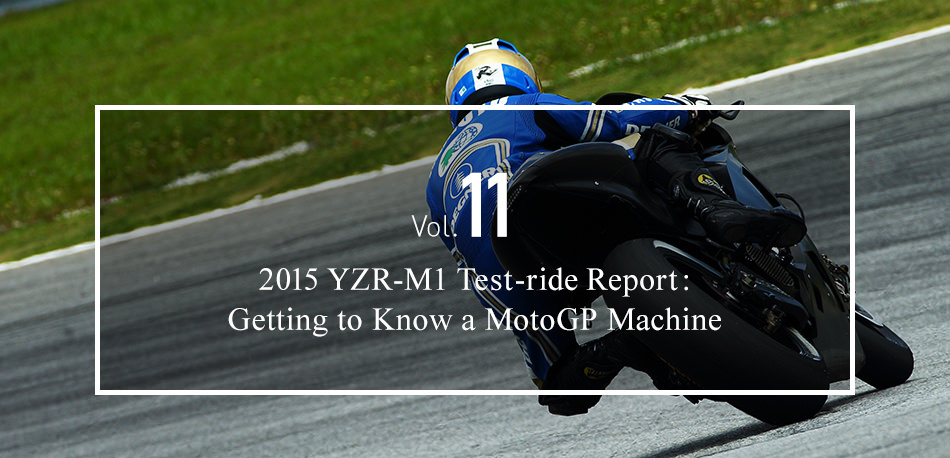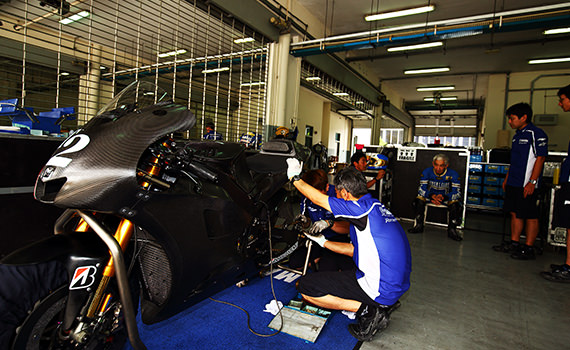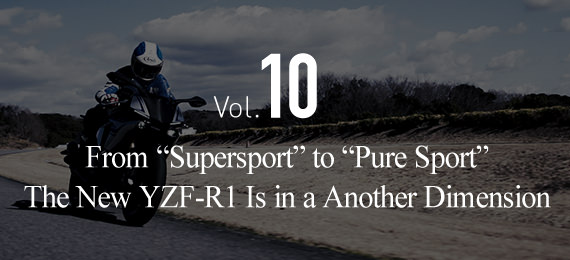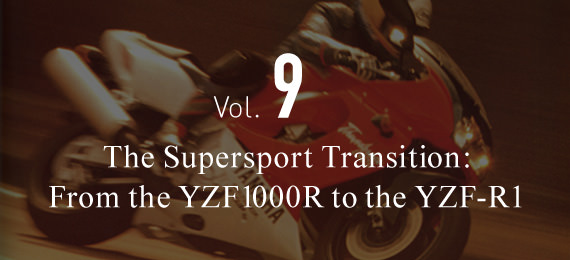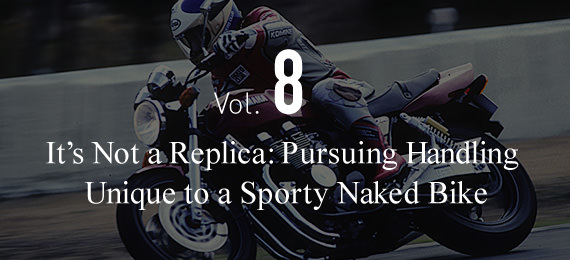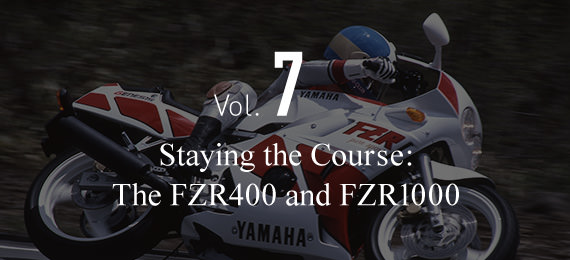The Tension Melts Away and I Find Myself Getting Bolder
(Return to Part 1)
Before I knew it, the first corner loomed ahead. I’d already felt the YZR-M1’s extraordinary stopping power and the perplexing degree of assurance its braking system provided, so I had a general idea of what to expect now. But as I approached the braking point coming off the straight, I was still asking myself if I was really ready or not. Even as this fear flashed through the back of my mind, however, I decided to go a little deeper into the approach before applying the brakes. To avoid the tremendous blast of wind I got hit with earlier, I braced myself and only raised my upper body up enough to have my helmet stick up slightly above the screen this time. The deceleration g-forces came once again and felt strong enough to throw my shoulders out of their sockets, but the front tire didn’t show even the faintest sign of starting to slide to the right or left. I smiled with appreciation at this feeling of stability; it was like the front tire had suddenly grown fatter.
The truth is, before starting this test-ride, I thought it might be hard to tell when the brakes would really start to bite. Would there be any play in the brake lever or would just a little tap mean full-on braking?
But that fear had proved to be unwarranted. What I found was that the way the brakes responded was so consistently linear that, instead, they felt strong as well as confidence-inspiring; they were easy to use rather than intimidating. The general notion with the carbon rotors used on the YZR-M1 is that they undergo a rise in temperature once braking force is applied and that gives them sudden and incredible stopping power that can even cause the rear wheel to come off the ground. But in fact, there was no indication of that kind of effect whatsoever. Also, the front fork functions to smoothly release the sudden build-up of internal pressure during braking to ensure the front stays in solid contact with the road. The result is a feeling of incredibly mild but sure footing. When releasing the brakes as well, there’s a smooth feeling without fluctuation from start to finish that makes it very easy to get used to.
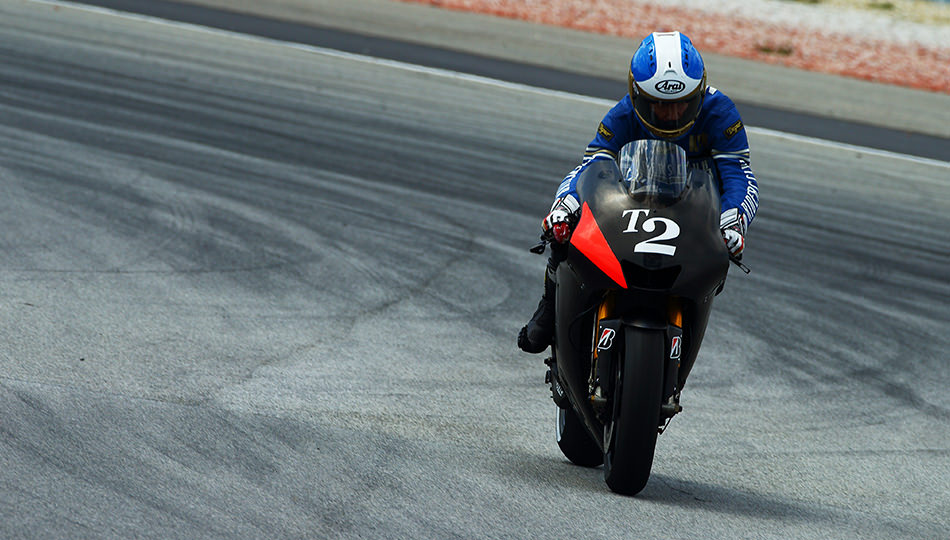
On top of that, regardless of when you perform downshifts, the machine maintains the same amount of engine braking; it’s truly a smooth, seamless operation. This means that the rear wheel also maintains contact with the road, so it feels like there’s a good amount of freedom to change the line you run through the corners, even during really hard braking. I remember being told that the control system was developed with the aim of giving the rider the ability to deal with the seemingly ruthless powersliding of rival machines when entering a turn. Now I realize how well they had achieved that with the bike’s performance during deceleration. Actually, it’s not just in deceleration.
The many factors involved in creating this high level of overall performance that gives the rider such freedom [in the corners] is something that even I, with my level of skill far below a MotoGP rider, can really feel.
Once I’d lost my insecurity about hard braking on the YZR-M1, I was able to get more aggressive. In just two laps, the tension I’d experienced before beginning this test-ride—where it felt like my heart was about to burst—had begun to rapidly fade away. As strange as it may seem, the newfound confidence had me starting to try applying throttle from the first part of a corner using the traction at the rear wheel to propel me forward.
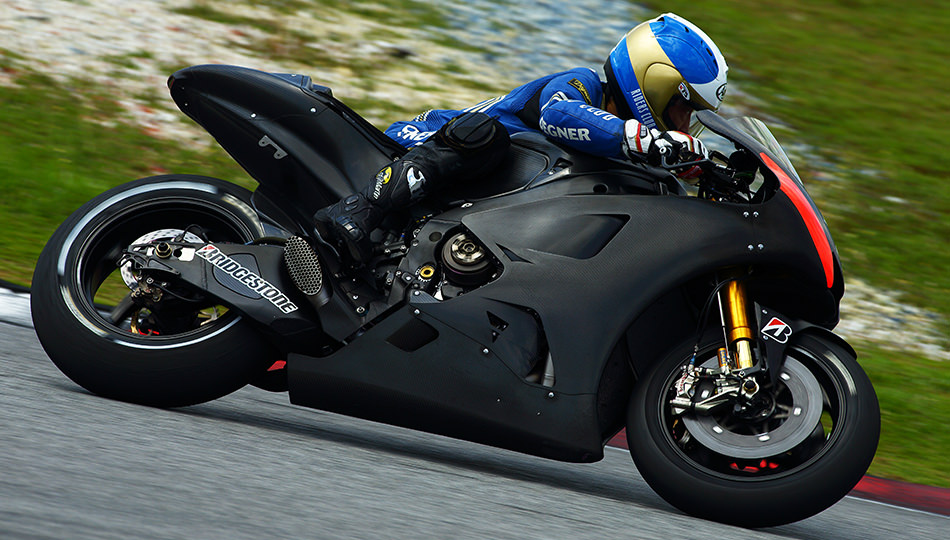
As for how the bike leans, it was a compact movement with a low rotational axis, but it was also puzzling in that it wasn’t excessively sharp by any means. It was light and quick, but also had a softness that made it easy to find a natural rhythm. Another thing that impressed me was how clearly I could feel front-end grip. MotoGP machines are not equipped with active suspension that automatically responds to different riding situations like the one on the YZF-R1M. However, when the load forces on the front wheel from braking change into cornering forces at the beginning of a turn, there’s no change in the feeling; the front always feels like it’s being pressed to the road. This is a motion that’s always consistent in the set pattern of going from full-on braking into the lean for the corner. For that reason, you’re not even aware that the rear wheel is maintaining its grip as you make your way through the corner; you just end up leaning into the turn in one smooth motion. If you’re not
used to this performance, it’s easy to turn too sharply and end up in a mistimed turn.
Thinking that I should be able to at least time it right on one of the slower turns, I went into the hairpin at what initially felt too fast. But actually, it turned out to be a fairly well-timed turn in the end.
Again, since the feeling of grip at both the front and rear wheels stayed solid throughout, it also allowed a great amount of freedom in the timing for opening the throttle for the exit.
On the ensuing larger corner where I felt more at ease, I began testing what would happen if I really opened the throttle earlier. The bike emitted a deep, powerful growl with a rippled sound coming from the difference between the grip of the tire and the engine’s rpm, and I’m subsequently enveloped in a gratifying feeling of traction. Of course I knew it would be too risky to lean through the turns at low bank angles with my knee out and scraping the track like a MotoGP rider. I couldn’t imitate them slicing around the corners right at the apex, but the feeling of having the rear wheel and swingarm function as one to push the chassis forward through the turn was simply exhilarating and out of this world. In a 2nd-gear corner and in faster 3rd- or 4th-gear corners, it was bewildering how steady and well-mannered the machine’s performance remained from the time you opened the throttle until you have gone through the corner.
Also, the transition from the moment you open up the throttle and—after a split second—feel the rear wheel gently sink its teeth into the pavement and deliver potent grip from that point on was just magnificent. I knew the reason I’d gained the confidence to begin riding more boldly in such a short time on the YZR-M1 was its transitional characteristics. Input from the rider always resulted in a mild and composed response; it was never sudden or jerky. Although you may find it hard to believe, this performance also included constant compression and rebound movement in the front and rear suspensions similar to tourers or big scooter models. Of course, the absolute limits of the suspension travel on the YZR-M1 are not large, but it’s this movement that enables the bike to maintain its cornering capability when the tires are on the limit and in a state of semi-slip, as well as what allows its riders to recover from things like sudden changes of their lines through turns in the heat of competition.
But there was little time for such thoughts. As I passed the pit area, I caught a glimpse of the “P” sign posted for me... It’s my fifth lap already?! Couldn’t they let me ride it just a little longer? But I knew it wouldn’t be any good to make excuses like, “I didn’t see the sign.” As reluctant as I was to end this experience, I also knew all too well that the more I got used to the bike, the greater the chance of doing something too risky became. So, after giving Yamaha’s MotoGP factory bike full throttle at a few more places and enjoying its mind-blowing performance—sometimes feeling like I was on the verge of blacking out—I headed back into the pit lane.
Delivering Its Rider Assurance and Confidence,the YZR-Ma1 Is Yamaha Handling
Though I only had five laps on the YZR-M1 and it was my first time on a MotoGP machine in 12 years, the bike was so easy to get used to that it got me confident enough to try going full-throttle and braking hard. To be honest, I had never even imagined that I would be able to experience the full technological marvel of a premier-class machine in this way.
Let me be even more honest. Being well past the age where I could even think of having the riding skills to master a wild steed like a MotoGP machine, I came to Sepang for this test-ride telling myself that I wouldn’t try to do anything more than verify the performance characteristics that became the base for the YZF-R1M. Nonetheless, from start to finish, it was one unbelievable experience after another throughout my few laps on the track. I even got to the point where I was actually beginning to have fun on it! Of course, this is largely due to the bike’s electronics.
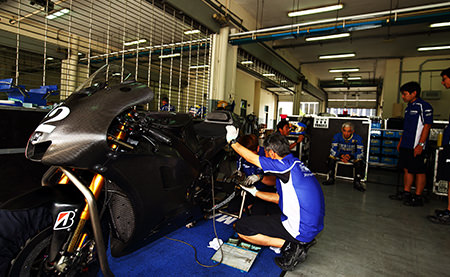
At this Sepang session before the official pre-season tests, I saw as many engineers staring into laptop computers as there were mechanics in the Yamaha pit area. Today’s electronic devices not only have the role of helping a rider recover from mistakes but have also evolved to the point where we are now on the verge of a new era where they constitute an integral package with machines. Even with the latest YZF-R1M, its electronics can detect every direction the chassis moves in as well as the speed of that movement in order to adjust its characteristics and make it easier for the user to ride.
It’s said that the YZR-M1’s electronic control systems are programmed to handle each specific corner of the track it will race on. In the case of my test-ride, the systems were turned off because it would take time for a new rider like me to get used to how the electronics change the character of the bike. That’s how “packaged” these electronic systems have become.
However, there’s something that mustn’t be forgotten here. The most important factors are achieving transitional characteristics that are easy for the rider to get used to and making sure that the degree of change in a bike’s character from load forces is not sudden, and so composed and controlled that it’s barely noticeable. This in turn gives the rider the assurance and confidence that allows them to enjoy the ride. No matter how much data or information you may manage to gather, that alone will not lead to alleviating the unease a human being will perceive. Any change that is made and anything that occurs must be kept at a level low enough that it doesn’t disturb the rider’s sense of assurance. This knowhow, which could be described as an ability that extends to being able to even anticipate results, is certainly an essential element in tuning electronic devices into an integrated part of the machine package.
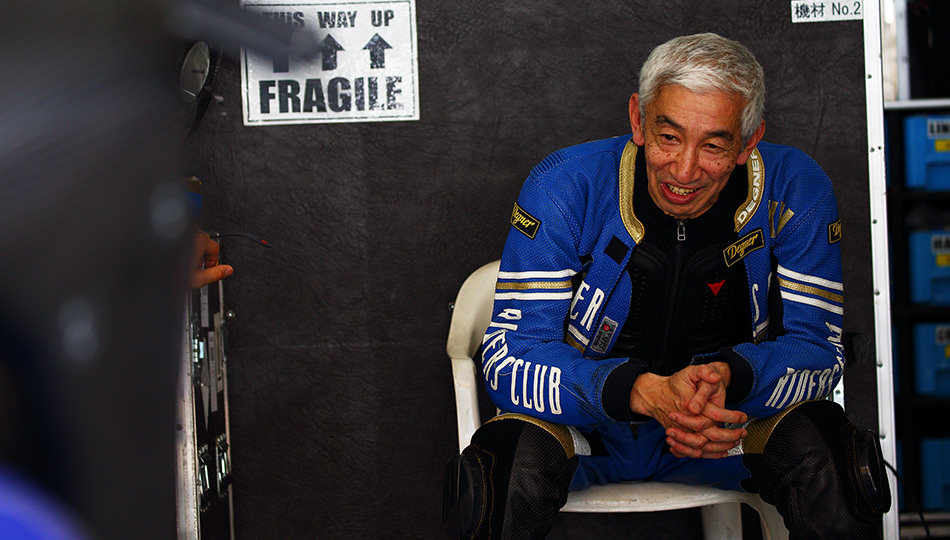
What this brings to mind is Yamaha’s long-held fixation on handling that gives the rider a sense of assurance, a tradition dating back to the days when most roads in Japan were still unpaved. No matter how much attention and praise might be focused on the rival models’ sharp cornering and agility, Yamaha continued to stick stubbornly to this policy of rider assurance. The weight of that history is an invaluable legacy of the Yamaha brand.
What’s more, as time passes and those in charge of motorcycle development and evaluation pass the baton to the next generation, the spirit of traditions like this may continue to be handed down, but the realities of how it is practiced may change nonetheless.
What is so surprising about Yamaha Motor, however, is that to my knowledge, the real practices have always continued to hold firm. That’s why, before we knew it, “Yamaha Handling” came to be something we felt or recognized. As I rode the YZR-M1 and was shocked by how easy it was to ride, I knew that its ride would never have been possible without that long Yamaha tradition. It was a test-ride that symbolized the best achievements of Yamaha Handling.
“You can’t enjoy the ride if you don’t feel assurance in the bike’s performance.” This conviction handed down through generations of Yamaha Motor developers and an unchanging dedication to rider-friendly performance always in tune with rider perceptions is what makes Yamaha truly unique.


